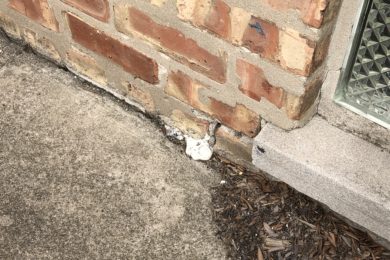TIPS ON BASEMENT FOUNDATION CRACKS
The foundation walls and floor of your basement are built to support your house and to keep out the moisture that surrounds them. Their purpose is to keep your home dry and create a stable structure for you and your family. When foundation walls crack, it can cause moisture or harmful gases from the ground to seep into your basement, decreasing the air quality, causing mold growth and damaging personal property.
There is no viable quick fix when it comes to basement foundation crack repair. There are different correction methods and knowledge needed to fix them correctly. Let’s take a look at the list below for some tips and a little more knowledge about foundation cracks.
1. THERE ARE THREE REASONS FOR CRACKS IN YOUR BASEMENT FOUNDATION
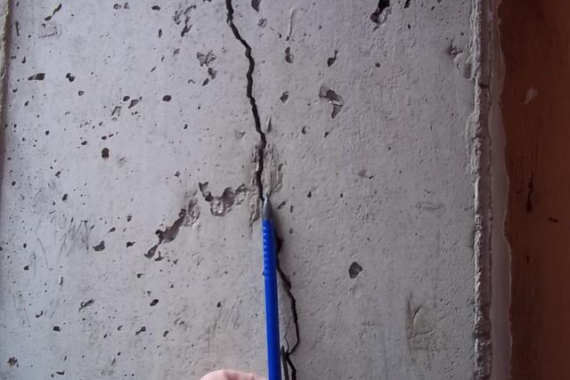
Shrinkage:
Shrinkage is caused by the poured concrete, walls or floor, drying too fast. The quick-drying time causes the concrete to shrink, and hairline cracks are the result. Shrinkage is noticeable not long after the construction of the house.
Settling:
Settling causes cracks in the basement foundation when the ground below the foundation continues to compress under the weight of the poured concrete. The cracks that happen are a result of settling and directly related to the amount of ground compression. If the ground under the basement foundation only compresses for a short time, the cracks are generally minor. However, if the ground continues to settle for a more extended period, the cracks can become more numerous and troublesome.
Movement:
The most common cause of basement foundation cracks is movement. Movement and shifting in the ground under the foundation can cause foundation cracks. As with settling, if the movement continues, the cracks will get worse.
2. CRACKS IN FOUNDATION WALLS AND FLOORS HAPPEN FOR THE SAME REASONS BUT ARE NOT THE SAME WHEN IT COMES TO FIXING THEM.
Cracks in the basement foundation floor can be more challenging to fix, especially if you are noticing leaking or wetness. Typically, the floor cracks will only leak when there is a significant amount of water leaking underneath your basement floor.
If you are noticing leaking on your foundation floor, it would be a good idea to check your sump pump. Often, when you see water coming through the cracks in the basement foundation floor, the sump pump has stopped working as it should. If your sump pump is working, then an underground drainage system could solve your floor leakage issues.
When water leaks are noted, basement foundation crack repair becomes very difficult. Wet concrete will not allow waterproofing products to adhere well or permanently. Also, for the best seal, the product would have to be applied to the top and underside of the floor which would be very difficult at best.
3. BASEMENT FOUNDATION CRACKS CAN NEGATIVELY AFFECT THE AIR QUALITY IN YOUR BASEMENT.
Though water leakage, through foundation cracks, can be a big hassle, cracks in basement foundation walls and floors could be an entry for other potentially dangerous gases, such as Radon, Methane, and even pesticides.
When the cracks give these gases a possible entry into your basement, the air quality in your basement could become a problem for you and your family.
4. MOLD
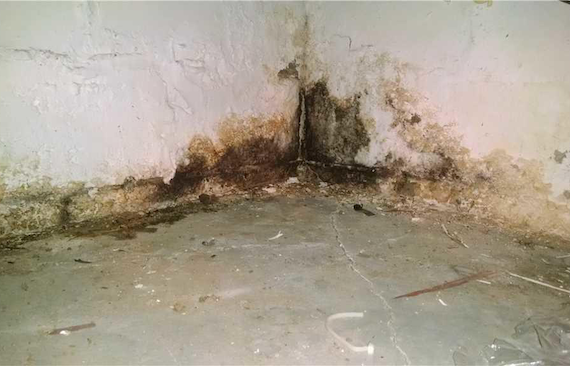
Basement foundation walls that have water leaks can potentially cause a mold infestation in your basement due to the excessive moisture that can soak into the concrete. Mold can slowly spread throughout other areas of your home.
At a glance, mold on your walls is unpleasant to look at and could cause a nasty smell as well. However, the potential health risks and structural risks to your family and home could be a lot more dangerous. Mold not only destroys the material it colonizes on, but it can also adversely change the air quality that in turn could cause illness.
5. DIFFERENT TYPES OF BASEMENT FOUNDATIONS REQUIRE DIFFERENT TYPES OF REPAIR FOR OPTIMAL RESULTS.
Poured concrete: Poured concrete walls are stable and formed as a solid block of concrete. If you need to repair cracks in this type of structure, an expanding urethane-based sealant can be injected into the cracks to seal them.
Block, Brick or Stone: Walls made out of these materials are made up of multiple parts patched together with cement or mortar. Repairing cracks in these types of structures is best done from the outside rather than the inside of the basement. A flexible elastomeric membrane is a preferred material for this type of basement foundation crack repair.
6. EPOXY FOR BASEMENT FOUNDATION CRACK REPAIR
Epoxy is a substance that can be used to fix cracks in poured concrete basement foundation structures. Using epoxy for crack repair may not stop the wall from cracking or leaking again in the future if there is a continued problem with the ground pressure pushing against the walls. However, this could be a quick-fix option until further investigation is done on your foundation.
7. REPAIRING PREVIOUSLY REPAIRED CRACKS
It is vital that previously repaired cracks are repaired correctly as they are different than a new crack and require additional preparation and knowledge when selecting a method of repair that will be effective.
Taking the time to remove as much of the previous repair medium as possible, and injecting the crack with urethane on the inside of the structure, is a suitable method.
A previously repaired crack can also be corrected from the outside using either the elastomeric membrane or sodium bentonite as the preferred repair medium.
8. DON’T JUST FIX THE LEAKING CRACKS, FIX THEM ALL
If you have multiple cracks in your walls but are only seeking crack repair for the ones that are leaking, the other cracks will eventually leak if you don’t fix the source of the accumulated water.
Water follows the path of least resistance and the cracks that weren’t leaking before become the new doorway for the built-up water to escape.
It is more cost-effective to have all your basement foundation crack repairs done at the same time rather than having someone come out multiple times to fix the other cracks as they start to leak.
Basement foundation crack repair is a necessary investment to protect your home and your family from potential problems associated with the cracks. Whether it be structural instability or potential health risks, it is essential to have basement foundation cracks repaired quickly and correctly.
Many problems can be prevented by taking simple precautions while others may require a more complicated approach. If you are experiencing difficulty resolving a foundation, basement, crawlspace or a drainage issue, contact your friends at Forever-Dry today (708)-423-2800.
TYPES OF FOUNDATION CRACKS
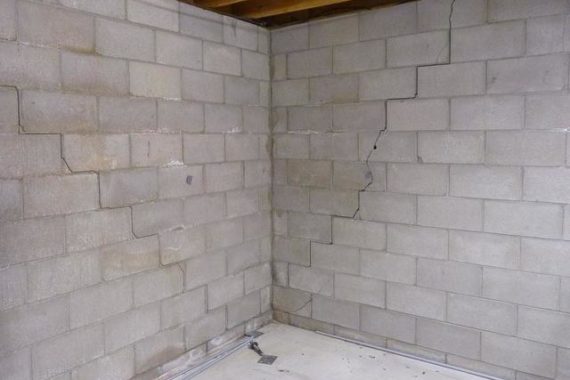
Discovering a crack in the foundation of your home can be unsettling, as this could represent extensive damage to your home’s foundation, which could mean costly repairs. However, if you have discovered a crack in your foundation you may be wondering if all foundation cracks are the same, or if certain cracks should be more cause for concern than others. The fact is that looking at the crack can tell you a lot about the damage to your foundation including what may have caused it and how severe the problem is. To help you get a better understanding of foundation damage, here is a quick overview of the most common types of foundation cracks.
VERTICAL CRACKS
Of the foundation cracks you are likely to encounter, vertical cracks are generally the most common and least severe type of crack you will come across. Vertical cracks are cracks that go straight up and down, or maybe on a slight diagonal of within 30 degrees of vertical, and are a common occurrence in many houses. These types of cracks are usually the result of your foundation settling, and it is thusly not uncommon even for new houses to have this type of foundation damage as a home’s foundation can settle greatly in the first few years. Fortunately, this type of crack is usually the easiest and least expensive to have sealed. Generally, a urethane or epoxy material will be injected into the crack, ensuring that it is sealed and does reopen or grow as your foundation continues to settle.
DIAGONAL CRACKS
Another common type of crack that you may encounter is a diagonal crack that runs along your foundation or basement wall at a 30-75 degree angle. This type of crack may be a thin hairline crack, but will likely be wider at one end than the other. Diagonal foundation cracks are caused by differential settling of a foundation, which is where one side of a home’s foundation settles lower than the rest of the foundation. This type of uneven tension then causes diagonal cracking. Differential settling can be the result of the house being built on a hill, or due to the expansion or contraction of the soil under a portion of the home. This type of crack can be more costly to repair than a vertical crack since it may be necessary to address the cause of the differential settlement after the crack is sealed. However, the solution may be as simple as installing new gutters so that rainwater directs away from a section of your properly that regularly becomes flooded, as this water could be causing the soil under a portion of your foundation to shift.
HORIZONTAL CRACKS
Foundation cracks that run sideways (horizontally) are the most serious type of crack to look out for, as they can signal serious damage to your home’s foundation and structural integrity. While these cracks are sometimes seen in homes with poured concrete foundations, they are most common in homes with concrete block or brick foundations. Several things can cause this type of foundation damage including soil pressure outside of your foundation, and hydrostatic pressure that can cause your basement walls to bow. If you discover this type of foundation damage it is important that you have it repaired as soon as possible before the structural integrity of your home becomes compromised. This type of cracking will require the most extensive repairs, which will likely include reinforcing your foundation in order to secure it and prevent further damage.
Knowing what types of cracking you may discover in your home can help you to determine the severity of the damage to your foundation. Ultimately, however, any cracks you discover in your home’s foundation should be taken seriously and professionally inspected and repaired so that you can ensure the structural integrity of your home. Contact us to learn more about what you need to know if you encounter cracks in your home’s foundation.
FOUNDATION CRACKS GUIDE
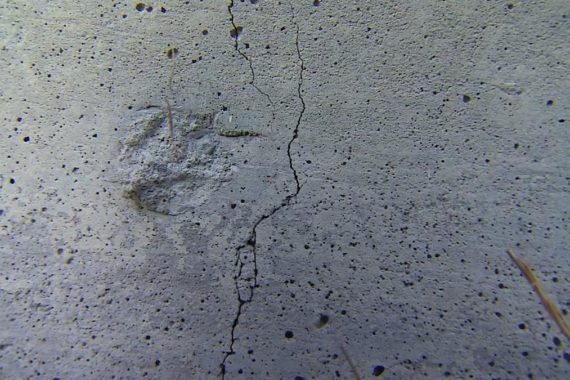
Finding a crack in your basement wall or floor can be disheartening and cause great anxiety. Immediately you start worrying about damaging water flooding the space and the cost of repairs. You can hire a professional to inspect it, but then you’re concerned about major remediation work he might recommend. How will you know when to start worrying?
This comprehensive guide to foundation cracks will provide a concise synopsis of every type of crack that may plague your basement, the possible causes and what type of work will be necessary to correct it. There are many types of foundation cracks that can occur, signaling some type of damage, but repair work will vary based on the type of foundation material plus the size, shape, and location of the crack. It’s important to accurately determine the size of the crack. Measuring with a tape or ruler can be difficult for anything less than 1/4”. An easy reference is: 1/32” = width of a credit card, 1/16” = width of a nickel, 1/8” = width of two nickels.
Now you’re ready to inspect and evaluate your own foundation to determine the best course of action.
WALL SHRINKAGE FOUNDATION CRACKS
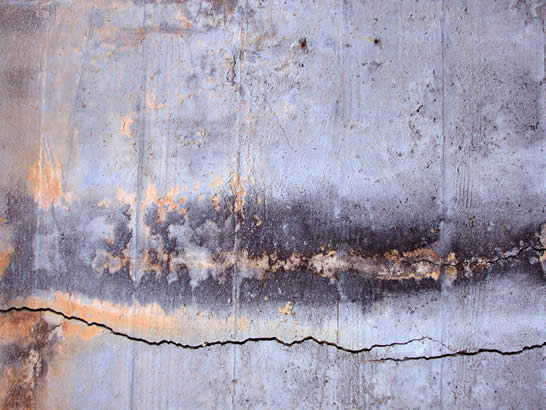
You’ll notice these are generally uniform in width or sometimes, less commonly, appear as V-shaped cracks. These will be wider at the top and get smaller as they travel vertically down the wall. They will range in length and will stop before reaching the bottom of the wall. Shrinkage cracks will appear under basement windows, above doors, at step-down areas and in the center of a long wall if control joints were not used. They’ll usually be less than 1/16-inch wide and show up as hairline, sporadic, random, and discontinuous cracks or a combination of all types in the wall. Shrinkage cracks almost always extend through the full depth of the foundation wall so maybe a source of water entry.
CAUSES OF WALL SHRINKAGE CRACKS
Shrinkage occurs as concrete cures, which is a chemical reaction and affected by the amount of water, aggregate type, humidity, groundwater, sun exposure, temperatures, and other conditions. These cracks can be caused at original construction due to several factors, depending on the type of construction. As concrete shrinkage occurs, it will develop internal stresses. Cracking relieves this stress during curing.
- Poured concrete foundation walls
Shrinkage cracks can be caused by poor mix, rapid curing, improper or omitted steel reinforcement. Temperature swings consistent with the change of season can also cause the concrete to expand or contract to cause cracking. - Block foundation walls
Shrinkage cracks are generally uniform in width, form at the center of the wall and are also caused by curing and temperature variations. - Brick walls
While bricks are no longer used for present-day foundations, older buildings may still have structural brick walls in place to support the first floor. Brick walls don’t normally shrink but expand forever.
REPAIRS OF WALL SHRINKAGE CRACKS
Shrinkage cracks usually don’t require any remediation work or structural monitoring in poured or block walls. You can expect to see more as the foundation dries completely. However, brick wall cracks will not be caused by shrinkage and may indicate a structural or support problem. Caution should be used if the bond courses are broken. There is a significant risk of wall collapse, so contact a professional immediately.
Shrinkage cracks can be sealed to prevent water entry by chipping out the crack, filling with masonry patching compound, epoxy, polyurethane foam or other sealants.
WALL SETTLING CRACKS
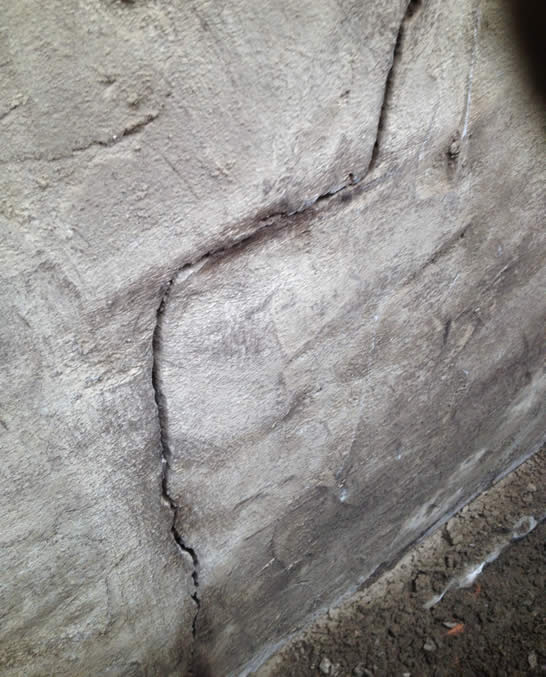
Vertical Wall Cracks
These are often present in poured walls, wider at the bottom and continue to increase in length and width. These will likely occur shortly after construction, extend down the entire length of the wall to the floor and possibly be the site of water infiltration. Settling cracks can increase in size to 1/4″ or more or stop completely.
CAUSES OF WALL SETTLING CRACKS
These are caused by foundation movement due to poorly prepared foundation footings, improperly placed or omitted steel reinforcement. Hydrostatic pressure from the sub-grade settlement, horizontal loading from the structure above and backfilling can also cause uneven stresses and lead to cracking. Hydrostatic pressure exerts force against the exterior foundation wall and becomes more severe further underground.
Diagonal Wall Cracks
While the majority of settling cracks display vertically, diagonal cracks may arise at a corner of a concrete wall where it was exposed to frost damage, expansive clay soil, point loads exceed the concrete mix used, or even a tree/shrub planted too close to the foundation wall. A diagonal crack under a ground floor window can be due to foundation heave indicative of shallow or absent footings. Cracks that appear anywhere else on the wall that are wider at the bottom than the top will indicate settlement under the building.
Horizontal Wall Cracks
These often show up in concrete block construction, and where they appear will determine the cause and severity. If they are located in the upper third of the block wall, they were likely caused by surface and subsurface frost or vehicle loading.
Mid-wall Height Cracks
Are likely from damage by use of heavy equipment near the wall, premature or excessive backfilling before the floor framing was set, or earth loading worsened by water or frost.
Low-Wall Height Cracks
Are usually caused by earth loading and exacerbated in areas of wet or dense soil. Earth pressure is the strongest at the bottom of the wall and may deteriorate as the horizontal movement at the wall is pushed inwards.
Block or brick walls will crack straight along a joint or stepped near the ends of the wall. This, too, can be extremely dangerous and risk collapse if wall courses are broken. In all cases, cracks will appear in multiples in various locations around the foundation. 16″ to 48″ from the top of the wall and run parallel to the floor.
REPAIRS OF WALL SETTLING CRACKS
Ground conditions and the material will dictate the type of repairs that are recommended to correct settling issues. The foundation must be stabilized and driven steel pins are one method of accomplishing this. Pins are driven into the soil next to the foundation and seated on bedrock.
Shorter helical screw piers or friction piers can be used to prevent further settlement where there is no other support. Unstable soil conditions will warrant the use of rod and channel repairs. Threaded steel rods attach the damaged foundation to steel U-channels outside.
Excavation and reconstruction may be necessary for extensive repairs. This type of work is generally combined with basement waterproofing and drainage components to prevent a recurrence of the problem. This may include correcting roof or surface runoff problems or installing a French drain system. Severe settling cracks should never be sealed with caulk or epoxy without completing the necessary repairs.
FLOOR SHRINKAGE AND SETTLEMENT CRACKS
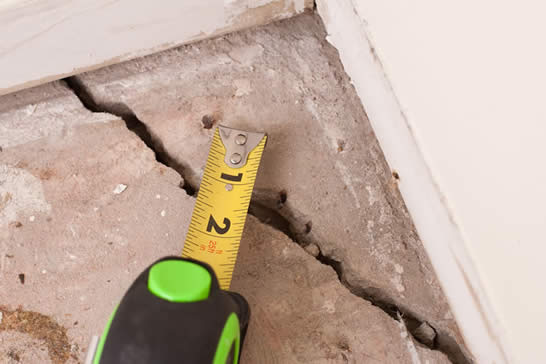
There are three different methods of installing poured concrete floors and each has unique characteristics and reasons for cracking:
1. Floating Slab
Concrete is poured over level loose-fill dirt or gravel. As the soil is not generally compacted, there is a risk of cracking and settlement. Water runoff, flooding or leaks can seep under the building and cause settling. Any visible foundation cracks, however, will not affect the overall structural soundness of the building.
2. Supported Slab
In this case, the edges of the floor rest on a lip in the concrete footing. The soil and gravel base are compacted. Soil settlement will have little effect on this type of pour as long as it has been reinforced; however, significant settling or improper reinforcement at pour can result in total collapse.
3. Slab On Grade
This method is used when a monolithic slab and the building footers are poured at the same time. Cracks may be indicative of footing settlement and maybe a structural concern.
REPAIRS OF FLOOR SHRINKAGE AND SETTLEMENT CRACKS
Shrinkage cracks in the basement concrete floor are common and rarely indicate the cause for concern. However, there are some remedial methods available to slow further cracking:
Adding control joints, if not included in the original construction, can reduce the stress of shrinkage. While cracks may still appear, they’ll likely be located within the joints and not across the floor.
Non-structural cracks that are allowing water infiltration can be sealed with polyurethane foam injection. This will stop leaks and can be smoothed over and covered with a concrete sealer or paint to camouflage unsightly cracks.
It’s highly recommended repairing the floor slab settlement when cracks exceed 3/16″ in width or 1/8″ vertical displacement. Slab-on-grade installations recommend repairs for cracks in excess of 1/16″ in width or vertical displacement. Tripping hazards, even though no structural concerns are evident, should also be repaired. Several methods can be implemented and are described as follows:
Mud Jacking
This process is used to lift the concrete floor slab by pumping low-strength concrete (mud) underneath. Polyurethane resins can also be injected under the foundation. The combination of resins solidifies into plastic that contains gas bubbles. As it expands, the floor will be raised. This method is suitable as long as load-bearing rock or stable soils aren’t too deep.
Grout Pumping/Slab Jacking
This method is used to raise interior concrete slabs on grade, monolithic concrete slabs or fill voids underneath the floor where bedrock or stable soils are deep. Thixotropic grout is injected under pressure to fill the void below the slab.
French Drain System
When it’s determined that groundwater is flowing underneath the floor and eroding the soils away, a French drain system can be installed. A trench is cut around the interior perimeter of the basement where a PVC drain pipe is installed in gravel and connected to a sump pump to carry excess water safely away from the home.
Some repairs will require excavation work which will entail the use of heavy equipment and exposing the foundation wall. While this will allow for a thorough inspection of the footings, walls, membrane and weeping tile, this is extremely dangerous and should be handled by a professional waterproofing company or contractor. Floor cracking can be symptomatic of a larger settling issue, and this extreme process may be the only recourse in fixing the problem.
IDENTIFY ACTION NEEDED
Concrete wall and floor cracks should be separated into three categories:
1. Cosmetic, requiring no further repair;
2. Monitoring needed, watching for changes or worsening conditions; and
3. Significant, definitely requiring repairs.
For those cracks, you’ve identified as needing repair, separate those in order of priority. Obviously, the most urgent are areas where there is a risk of collapse or unsafe conditions. For those less urgent spots, make sure to schedule remedial work in a short time frame as they will likely deteriorate quickly. A professional inspection should help in determining potential damage to the building and the timing of each repair.
By taking a proactive approach to structural changes, including concrete wall and floor cracks, you may be able to avoid major repair work. Remember, any time you have questions or concerns about foundation cracks or waterproofing concerns, contact the experts at Forever-Dry for more information (708)-423-2800.

